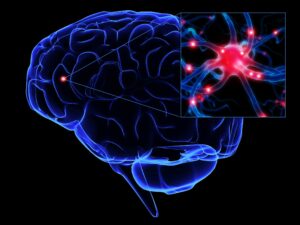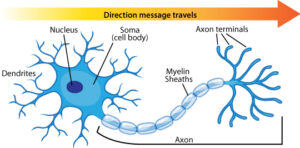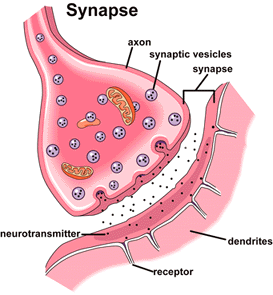
Our brain’s are made up of billions of nerve cells called neurons. These are the basic building blocks of the nervous system. To understand how our thoughts and actions, our memories and moods, we need to know how neurons work and communicate.
In 1873, Italian physician and scientist Camillo Golgi discovered a silver staining technique that is used to visualize nervous tissues under a light microscope. The method was named Golgi’s method. This was the start of studying neurons. Today, we now known more about the complexity of a neuron.
Although neurons can differ, they all consists of a cell body, dendrites, axon, and myelin sheaths. The cell body directs all activities of the neuron. This is connected to the bushy dendrite fibers that receive information, like messages, from other neurons and relay those messages toward the cell body. From there, the cell’s single axon fiber passes the message through its terminal branches from the cell body to the dendrites of other neurons or to muscles. In short, dendrites listen where as axons speak.

Dendrites are shorter in length where as the axons can be very long, even several feet through the body. The axons are encased in a myelin sheath, a layer of fatty tissue that insulates them and speeds up their impulses. Every moment, messages are being sent back and forth at amazing speeds from neuron to neuron.

A neuron communicates with other neurons at a synapse. To send messages, a neuron releases chemical messengers, called neurotransmitters. Within 1/10,000 of a second, the neurotransmitter molecules crosses the synaptic gap and bind to a receptor sites on the receiving neuron. When neurotransmitters attach to these receptors, they cause changes inside the receiving neuron and the message is delivered.This is best visualized as a key fitting into a lock. The excess neurotransmitters then drift away, are broken down by enzymes or are reabsorbed by the sending neurons, a process called re-uptake.
Understanding neurons helps us understand how thought, memories, actions, and moods are created. They even help explain how drugs effect our brains and create addictions. The more you know about the neuron, the easier it is to explain how our brain works.
Videos
Sites